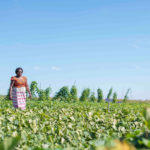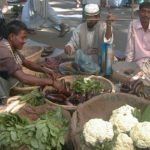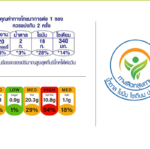Introduction
In a 2023 working paper discussing a study conducted in Southern Rwanda, researchers Esther Duflo, Daniel Keniston, Tavneet Suri, and Céline Zipfel undertook a two-step experiment of an agronomy training program among coffee farmers to assess the efficacy of farmer training programs in influencing crop yields and their wider ramifications within the agricultural community.
The study specifically aimed to ascertain whether the provision of training to a group of farmers yielded quantifiable improvements in crop production and if such training had discernible positive spillover effects on neighboring or non-trained farmers. The training program was designed and conducted by TechnoServe, an international agri-business NGO, from February 2010 to October 2011, and it was offered to coffee farmers to help them improve their crop health and yield.
In this post, I summarize the methodology of the research and the valuable insights it produced on intervention design, spillover effects, and their implications.
About the training program
The program was advertised to 29 villages, and farmers from 27 of the villages registered.
Study setup and methods
The study was conducted over a three-year period, involving a sample of 500 smallholder farmers. Researchers conducted extensive surveys, interviews, and on-the-ground assessments. These tools allowed them to collect a wealth of data from a diverse set of farmers, including those who received training and those who did not.
Data was collected through ten rounds of surveys, assessing knowledge, self-reported adoption, use of inputs, and crop yields. To measure knowledge and information diffusion effects as well as any impact on social connections, researchers collected social network data before and after the training. It’s noteworthy that the attrition rate in the sample from baseline to the final endline was 3 percent, and there was no differential attrition based on treatment status.
From the household surveys, the authors constructed an index of knowledge and an index of adoption of improved agricultural practices. Faced with the potential challenge of inaccuracies in self-reported data, the research team came up with an interest validation and check method. In addition to collecting self-reported adoption data, the research team audited the farmers’ coffee plots. For these audits, field staff were trained to recognize the relevant set of agronomy practices through examining coffee trees. They were then told how many trees to inspect per plot and how to select them.
Key results and findings
Additionally, treatment farmers reported higher use of both labor and fertilizer input, and their yields were approximately 6.7% higher compared to the control group. However, further analysis, considering the variation in village-level treatment concentration, reveals a layer of complexity in these results: there were negative spillover effects. The team discovered that in the villages with 50 percent and 75 percent treatment concentration, there were negative spillover effects on the control group, resulting in lower outcomes. In villages with 25 percent treatment concentration, the research team finds no evidence of positive treatment effects.
In other words, these results suggest that the positive treatment effects reported above were not a result of improved outcomes for trained farmers, but rather were the result of worse outcomes for the control group villages with 50 percent and 75 percent treatment concentration.
The authors of the study point out that these negative spillover effects are likely the result of fertilizer and labor market imperfections. For example, the reported increase in input in labor and fertilizer use by trained farmers in a context where supply is limited likely resulted in control group farmers failing to secure their usual fertilizer and labor input which resulted in decreased yields. This is what the paper refers to as a reallocation of labor and fertilizer inputs from the control group towards the trained farmers.
Another important finding from this study is that there was no diffusion of knowledge regarding agronomic practices to friends or neighbors in the control group. This lack of diffusion, taken together with the negative spillover effects, suggests that the practice of training a group of farmers, expecting that knowledge will spread and yields will grow, does not work in this setting. In fact, these findings show that this approach could lead to the opposite of the desired effect, because of the likelihood of negative outcomes on the control group.
Conclusion
The findings also reveal that context is important because it can be conducive to or challenge key program assumptions. While in the case of Rwanda there was no evidence of daily wage rates or fertilizer prices being significantly higher in the 50 percent and 75 percent treatment concentration villages, there was considerable evidence that neither market functioned very smoothly. More importantly, however, the fertilizer market in Rwanda was undergoing some changes during the time of the study.
This is why I believe that taking context and setting into account and developing programs with different components that respond to these potential challenges may result in better outcomes. Studies conducted in Kenya have demonstrated that intervention packages addressing multiple constraints, such as combining training with financial support, input supply, and marketing assistance, can effectively boost the adoption of new crops, fertilizer, and improved practices, ultimately increasing yields and profits (Ashraf et al. 2009; Deutschmann et al. 2019).
As Duflo et. al. point out, the practice of training a group of farmers and hoping that knowledge will spread, and yields will grow does not work all settings. In cases where fertilizer is expensive due to transport costs and privately provided, which limits its availability to poor and remote places, programs that encourage fertilizer use are likely to create market congestion. This is a lesson that can be applied to all other inputs. Training programs should consider the availability and affordability of inputs that are being highlighted to farmers, to avoid unintended negative effects as a result of the training.
The study serves as a call to action for the agricultural development community to rethink their approaches and ensure that training programs, in theory and in practice, promote sustainable, resilient, and thriving farming communities.




